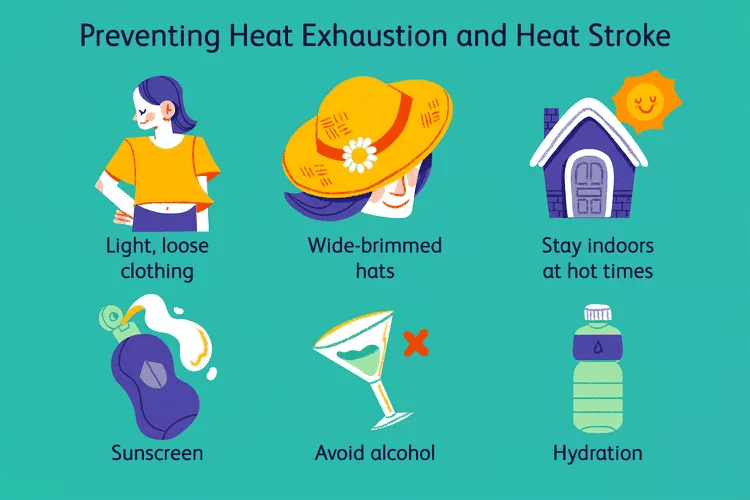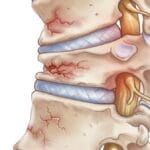Heat injuries can range from mild heat cramps to life-threatening heat stroke. With more children and young adults playing sports during late summer and early autumn, understanding and preventing heat-related illnesses is crucial. According to the Centers for Disease Control and Prevention, heat illness during practice or competition is a leading cause of death and disability among U.S. high school athletes.
Causes of Heat Injury
When exercising, our bodies cool off by sweating. However, if we do not replace lost fluids, we become dehydrated, making it difficult to sweat and cool down, leading to heat injury. Several factors can hinder our ability to cool off, including:
- Environment:Air temperature, humidity, wind speed, and sun exposure affect cooling. High humidity (over 60%) makes sweating less effective.
- Clothing: Dark, heavy, or full-body clothing and equipment like pads and helmets can increase heat stress.
- Sun Exposure:Direct sunlight with no shade can raise core body temperature.
- Fitness Level and Acclimatisation:Athletes need to be in good physical condition and allow their bodies time to adjust to warmer temperatures.
- Age: Children are less effective at regulating body heat compared to adults.
- Dehydration: Even mild dehydration (3-5% of body weight) can impair performance. Pre-activity hydration is crucial.
- Body Fat:Higher body fat can make cooling more difficult.
- Fever: Recent or current fever increases risk.
- Medications:Diuretics and stimulants can increase risk.
- Sickle Cell Trait:This condition heightens the risk if hydration and electrolytes are not maintained.
Symptoms and Types of Heat Injury
Mild Heat Injury: Heat Cramps
- Painful stomach, arms, and legs cramps due to salt and fluid loss during intense exercise.
- Treatment: Stop exercising, stretch affected muscles, and drink cool water or electrolytes.
Moderate Heat Injury: Heat Syncope and Heat Exhaustion
- Heat Syncope is weakness, fatigue, and fainting caused by hard exercise in heat. It often occurs during the first five days of a new activity or in those taking diuretics.
- Heat Exhaustion: Heavy sweating, extreme weight loss, decreased perspiration, and rising skin/body temperatures. Symptoms include excessive thirst, weakness, headache, nausea, vomiting, muscle cramps, dizziness, and loss of consciousness.
Severe Heat Injury: Heat Stroke
- A medical emergency where the body cannot cool itself, with a core temperature over 104°F, leading to potential organ failure. Symptoms include nausea, seizures, confusion, unconsciousness, and coma.
- Treatment: Call emergency services immediately, monitor and lower core temperature, use ice baths, and apply ice packs to armpits, groyne, and neck.
Prevention
Preventing heat injury involves understanding the risks and taking appropriate measures:
General Guidelines
- Consult a doctor before starting a new exercise if you have a health condition or take medications that could cause dehydration.
- Allow time to adapt to new activities or climates. Pre-season conditioning should be held in conditions similar to typical practices.
- Increase exercise intensity and duration gradually. Avoid wearing protective equipment at the start of training.
Recommendations
- Allow frequent rest and hydration breaks. Fluid replacement is essential, even if you don’t feel thirsty.
- Drink 24 ounces of non-caffeinated fluid 2 hours before exercise, with an additional 8 ounces just before. During exercise, take an eight oz. Water breaks every 20 minutes.
- Monitor urine colour: darker urine indicates less hydration. Aim for very light-coloured urine.
- Weigh yourself before and after the activity to track water loss and ensure fluids are replaced before the next session.
- Gradually increase heat activity over 7 to 10 days for acclimatisation.
- Wear lightweight, light-coloured clothing.
- Use sunscreen to protect against sun exposure.
- Schedule outdoor activities for the most excellent parts of the day in the early morning or late evening.
- Monitor weather conditions and consider postponing activities during extreme heat and humidity.
By understanding the causes, symptoms, and prevention of heat-related illnesses, athletes and coaches can ensure safer participation in sports during hot weather. These precautions can significantly reduce the risk of heat injury, providing a healthy and active lifestyle.





